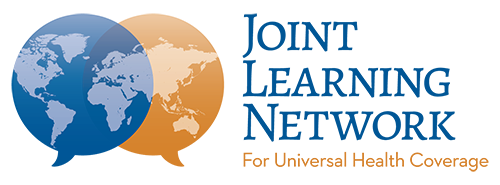Navigating the Labyrinth: Unlocking Effective PHC Performance Management in Low-Resource Settings
Authors: Jerry La Forgia[1], Jonty Roland[2], Anuska Kalita[3], James Soki[4], Rahul S Reddy Kadarpeta[5] Investing in Primary Healthcare (PHC) is more than just a financial commitment. Leaving no one behind is a central promise of the 2030 Agenda for Sustainable Development. A well-designed PHC system can act as a platform to integrate last-mile service delivery to provide comprehensive health services for the realization of Universal Health Coverage (UHC). It also addresses determinants of health, enhances health security, and ultimately leads to better health outcomes for all. Countries that build and maintain robust PHC systems position themselves as resilient entities capable of weathering future health shocks and effectively detecting and preventing epidemics while addressing the growing incidence of chronic diseases. Despite the evident benefits, the unfortunate reality persists in many countries where PHC systems remain unreliable, under-resourced, of poor quality, and lack accountability to users. Issues such as stockout and absenteeism plague these systems, undermining their potential impact. The disparity in healthcare infrastructure further widens the gap in health outcomes, disproportionately affecting vulnerable populations. The Tracking Universal Health Coverage 2023 Global Monitoring Report highlights that, as of 2021, approximately half of the world’s population – 4.5 billion people – were not covered by essential health services. Furthermore, in 2019, about two billion people experienced financial hardship due to out-of-pocket spending on health, including 344 million people living in extreme poverty. To fully harness the potential of PHC and elevate healthcare outcomes, country case studies from the PHC Performance Initiative (PHCPI) as well as other research, indicate a key role for effective performance management to ensure the delivery of sustainable and high-quality PHC services. PHC performance management consists of a set of formalized organizational processes supported by individual managerial skills that enable subnational health managers and leaders to continuously and routinely implement and adapt improvement efforts in PHC units and services. More specifically, effective performance management entails monitoring inputs, processes and outcomes while engaging and providing actionable feedback to PHC providers to foster practical solutions aimed at continuous improvement. At the heart of creating an enabling environment for PHC, performance management is strengthening sub-national and district-level leadership through enhanced management, supervision and engagement with front-line providers as well as communities. These leaders act as architects of performance improvement in orchestrating the intricate changes in healthcare delivery at the local level. They are instrumental in ensuring that healthcare facilities are adequately equipped, services are provided promptly and of acceptable quality, healthcare professionals are motivated and engaged, and the community’s needs are met effectively. By championing evidence-based decision-making through implementing and acting upon performance metrics, district leaders can catalyze significant improvements in PHC services. Additionally, fostering collaboration between district leaders, healthcare professionals, and communities can create a synergy that enhances continuous improvement. Enabling these district leaders involves providing adequate training, resources, and support to empower them to make informed decisions that positively impact PHC performance. There are various improvement building blocks that countries have taken to strengthen PHC performance management and, ultimately, their PHC systems, depending on their context. These experiences have shed light on key organizational and managerial pathways essential for elevating PHC in low-resource settings.The three interlocking pathways are mentioned below: Formalized Processes and Tools for Data Management: The application of formalized processes and tools lays the foundation for robust data measurement and collection. Key processes include setting and tracking targets, implementing supervisory systems, conducting performance reviews, providing constructive feedback, promoting effective follow-up on agreed actions and engaging stakeholders effectively. By embracing structured methodologies reinforced by practical tools, healthcare organizations can enhance their capacity to gather meaningful data, monitor progress, and engage stakeholders collaboratively, fostering a culture of transparency and accountability. Strengthening Managerial “Hard Skill” Capacities: Managerial “hard skill” capacities address core competencies crucial for effective performance management in PHC. This includes bolstering skills in data measurement, analysis, and interpretation, and planning and organizing work processes. Additionally, they also entail developing supervisory arrangements and embracing digital monitoring and visualization tools, thereby enabling healthcare leaders to develop and implement the aforementioned management processes with analytical precision and strategic foresight. Cultivating Managerial “Soft Skill” Capacities: Managerial “soft skill” capacities embrace the human element as pivotal in driving performance improvement. These involve fostering trust and teamwork among PHC staff, facilitating transparent communication on plans and targets, and engaging in collective problem-solving. More broadly, soft skills development emphasizes cultivating change management and leadership competencies, empowering leaders to coach, motivate, and guide health workers in addressing challenges and achieving their targets, thereby creating a learning organization based on a performance-oriented organizational culture. JLN’s Primary Health Care Performance Management Learning Collaborative intends to draw together national and sub-national leaders of primary care services to examine and implement more effective PHC performance management using a combination of three interlocking pathways. Learn more about this initiative here [1] Chief Technical Officer and Founding Director, Aceso Global [2] Associate Director, Aceso Global [3] Health Systems Specialist, Harvard School of Public Health/Consultant WHO on Primary Healthcare-Implementation Solutions [4] Program Manager JLN for UHC [5] Executive Director JLN for UHC
